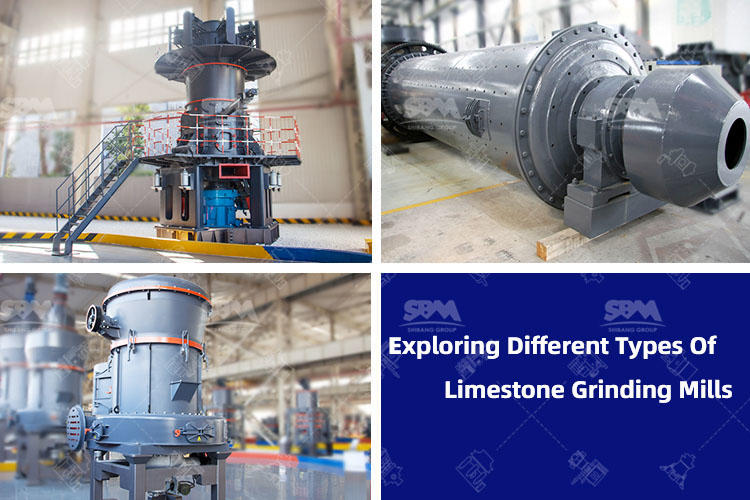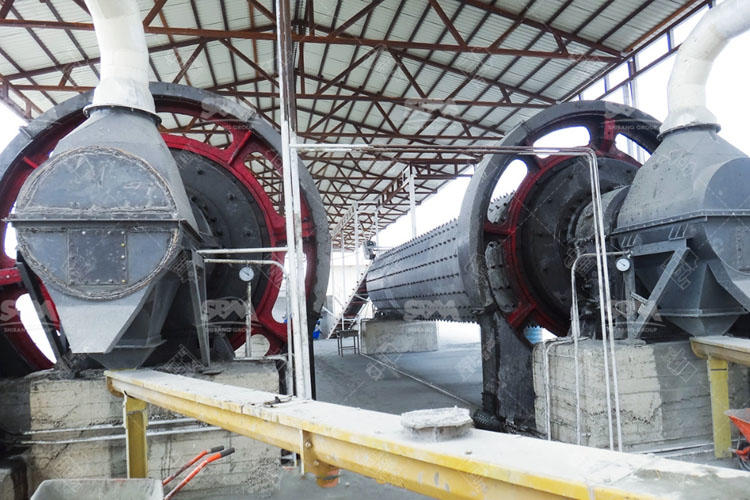Exploring Different Types of Limestone Grinding Mills
Limestone is a sedimentary rock composed mainly of calcium carbonate (CaCO3), which is a common mineral in nature. A limestone grinding mill is a type of milling equipment used to grind limestone into powder or fine particles. It is commonly used in the mining, construction, and chemical industries to reduce the size of particles and facilitate further processing.

When selecting a limestone grinding mill, factors such as desired fineness, production capacity, energy consumption, maintenance requirements, and cost should be considered. It is important to choose a mill that best suits the specific needs and requirements of the intended application.
Limestone grinding mill can vary in terms of their design and features. Some common types include ball mill, Raymond mill, and ultrafine vertical mill. Each type has its own advantages and is suitable for different applications and fineness requirements.
Limestone Ultrafine Vertical Mill
An ultrafine vertical mill is a type of mill specifically designed for grinding limestone into ultrafine powder or particles. This mill combines the advantages of vertical roller mill and ultrafine grinding mill, offering efficient grinding performance and precise fineness control.
In an ultrafine vertical mill for limestone grinding, the limestone is fed into the mill from the top and is ground between the rollers and the grinding table. The grinding rollers exert pressure on the material, crushing and grinding it as it passes through the mill. The ground limestone particles are swept upwards by the airflow and collected by a classifier system, while the larger particles are returned to the grinding zone for further grinding.
The ultrafine vertical mill is known for its high grinding efficiency and ability to produce ultrafine particles. It is capable of achieving extremely fine particle sizes, typically ranging from a few microns to sub-micron levels. This makes it suitable for applications that require precise fineness control and the production of ultrafine limestone powder.
The use of an ultrafine vertical mill for limestone grinding is common in industries such as cement production, power plants, metallurgy, chemical engineering, and others where ultrafine grinding and high fineness are required. It is particularly suitable for grinding limestone with a hardness of less than 7 and a moisture content of up to 10%.
Ball Mill Used in Limestone Grinding Plant
A ball mill is a type of grinder used to grind and blend materials, including limestone, into a fine powder. It consists of a hollow cylindrical shell rotating around its axis, partially filled with grinding media such as steel balls or ceramic balls. As the ball mill rotates, the balls cascade and grind the limestone, reducing it to the desired fineness.

When using a ball mill for limestone grinding, the limestone is typically fed into the mill along with water or a wetting agent. The grinding media and the limestone mix together, undergoing collisions and attrition, resulting in the reduction of the limestone particles. The grinding action can be either dry or wet, depending on the specific requirements of the grinding process.
Ball mills are widely used in various industries, including cement production, mining, metallurgy, chemical engineering, and more. They offer advantages such as high grinding efficiency, versatility in terms of adjustable fineness, and the ability to handle both dry and wet materials.
The selection of a suitable ball mill for limestone grinding depends on factors such as the desired fineness, production capacity, energy consumption, and the specific application requirements. Different types of ball mills, including batch ball mills and continuous ball mills, may be used based on the needs of the grinding process.
It is important to optimize the operating parameters of the ball mill, such as the rotation speed, ball size, and loading capacity, to achieve the desired grinding efficiency and particle size distribution. Additionally, proper maintenance and periodic inspection of the ball mill are essential to ensure its optimal performance and longevity.
Raymond Mill for Limestone Grinding
A limestone Raymond mill refers to a Raymond mill specifically designed for grinding limestone into fine powder or particles. Raymond mills are widely used in the grinding of various materials, including limestone, and are known for their high efficiency, adjustable fineness control, and reliable performance.
In a limestone Raymond mill, the grinding process involves the material being fed into the grinding chamber between the grinding roller and grinding ring. The grinding roller rotates around its own axis, exerting pressure on the material. The material is crushed, ground, and pulverized by the grinding roller and grinding ring. The fine particles are carried upwards by the airflow generated by the fan and collected by the classifier system, while the coarse particles are returned to the grinding chamber for further grinding.
Limestone Raymond mills are commonly used in industries such as mining, metallurgy, chemical engineering, and construction. They are suitable for grinding various non-flammable and non-explosive materials with a hardness of less than 7 and a humidity of less than 6%. Limestone Raymond mills are capable of producing a wide range of fineness, from coarse to fine powder, depending on the specific application requirements.
The advantages of using a limestone Raymond mill include its high grinding efficiency, precise fineness control, easy maintenance, and cost-effectiveness. It allows for the processing of large quantities of limestone into fine powder, making it suitable for applications such as cement production, building materials, agriculture, and more.
When choosing a limestone grinding mill, factors such as production capacity, energy consumption, and maintenance requirements should be considered. It is important to select a suitable model and optimize the grinding process parameters to achieve the desired grinding efficiency and fineness.







